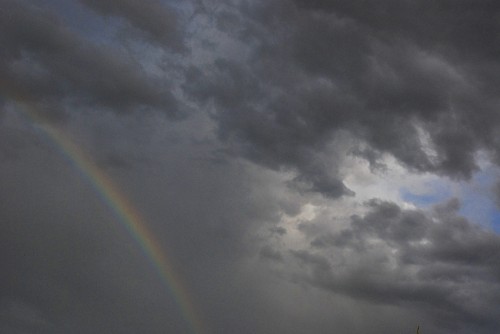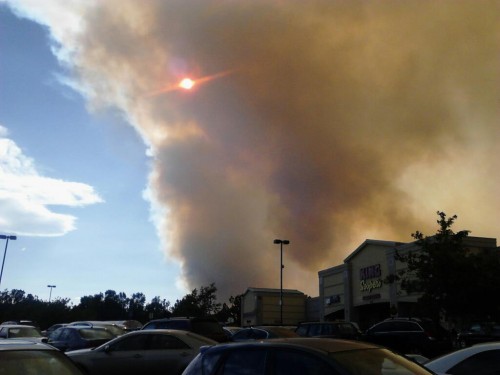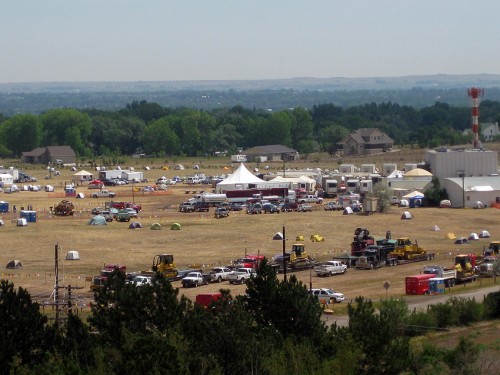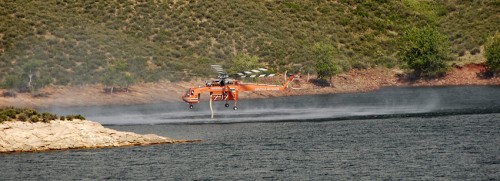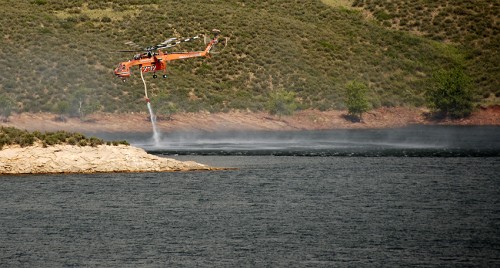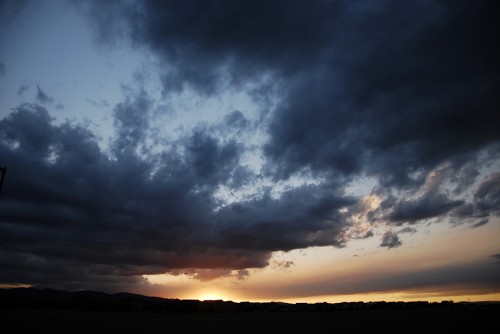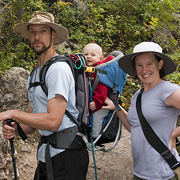High Park Fire Update: Mop-Up Efforts
It’s been about two weeks since I wrote about the explosion of the High Park fire, just west of our Northern Colorado town. In that time, it has burned another 30,000 acres, and most estimates of the burn area are near 90,000 acres (which is 140 sq miles or 3.9 billion square feet if you want to re-carpet it). There have been 259 homes lost and one person killed by this huge fire, which put it as the second worst in the history of the state of Colorado… for a while.
For the last few days, though, the smoke plume has dissipated and the skies have begun to cloud over for evening rain showers again. Our hopes and our saving graces are in the hard work of the amazing fire fighters we have out here, and the summer rains that should start coming again in July.
While we, in Fort Collins, spent most of the month of June watching smoke plumes fill the skies, the rest of Colorado was watching us with anxiety. This week, the tables have turned and terrible fires are spreading through Estes Park, Colorado Springs and even parts of Boulder. As our fire reaches towards containment and people are returning home, thousands are running from the flames in other parts of our state.
Having seen it all first hand, it’s hard to watch it happening again.
We’ve learned a lot from our monster fire. I’ve been driving past the incident command post every day on my way into work, and I’ve seen military vehicles, heavy machinery, and many huge helicopters up close and personal. I watched helicopters fill up with water from the reservoir and try to save homes. I had to stop and let a HEMTT make a wide right turn in the middle of the road yesterday. I’ve seen firefighters covered head to toe with black ash, standing outside of their tents, and staring up at that huge, ever-present plume of smoke.
We’ve all been reading about daily progress fighting this fire, and learned about how to fight and when to let it burn. We’ve learned the difference between direct and indirect firelines, about back-burning, retardant slurry and mop-up. We’ve learned the difference between containment (a fire is unlikely to spread, but still burning) and control (the fire is considered “out”).
We’ve had an “in flux” of wildlife in town, including several moose. One swam all the way across Horsetooth reservoir and wandered down into the forests near my office. Another was found foraging in a parking lot near Mark’s office 25 miles away!
So, here comes the end of June and the beginning of July! Our fire is at 85% containment, but the mountains west of town still smolder and burn. Now that one firefight is over, the crews are starting to head south to face the next one head-on. People in Colorado Springs are facing even more fear and devastation. Our hearts go out to them.

